|
Technology: Asymetrix Toolbook program,
Video, 3D modeling, Animation, Lip-syncing, Audio The Avatar was Nicolet's easiest and most affordable new spectrometer. It is a tool that opened up potential applications in industries who's managers and decision makers may never have heard of a spectrometer. Thus an important challenge for the Avatar sales CD was to reach an expanding, less technical market. In addition to demonstrating the Avatar's benefits and ease of use, it educates potential new spectrometer users about the technology. The CD uses a variety of methods to present technical information in an accessible and entertaining way. Video shows how the Avatar is used at a hypothetical company. 3D animations show how the Avatar works. A 3D animated Avatar spectrometer and his sidekick computer monitor comment on the information being presented. Their often humorous banter emphasizes the intelligence and friendliness of the system. You can see them in the upper right corner of screens 3 through 8. Other Credits: The
Pixel Farm (3D animations, script and video assistance) |
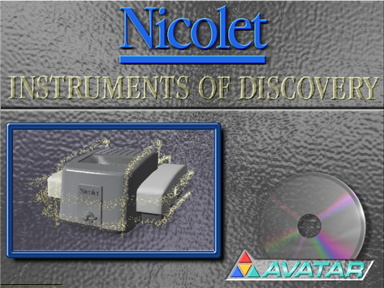    Avatar Sales CD 1 of 8 |
|
Technology: Flash application,
Streaming audio The Integrated Web Calculator (IWC) Demo is an interactive Flash application that walks through the features and benefits of CUNA Mutual's IWC software. We designed Flash animations to illustrate what the IWC software does, often enhancing actual IWC screen sequences to reinforce key ideas. The intuitive and flexible navigation
was designed to accommodate potential customers browsing the information
or sales reps using it as a sales support tool.
The demo is accessible from CUNA Mutual's web site as well as business-card-sized
CDs. Preload and exit functions adjust for either delivery method. |
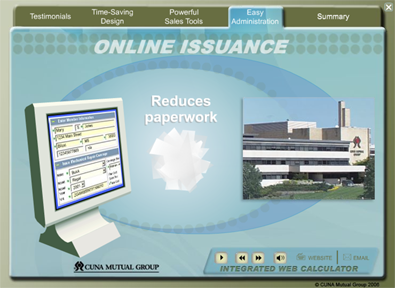    Integrated Web Calculator |
|
Technology: Macromedia Director program,
3D modeling, Animation, Multi-lingual audio The Elite Assembly Manual is an interactive guide for the assembly of window blinds. Animations and images demonstrate the assembly process, accompanied by narration that can be switched between English and Spanish on the fly. The tutorial is easily understood by assemblers from a range of backgrounds. Springs improved their manufacturing quality and standardization with this tutorial. Animation development was streamlined by using the same CAD software (SolidWorks) and models used by Spring's engineers. This guaranteed the accuracy of the models and allowed the manual to be easily updated when the engineers redesigned a blind. Other Credits: The
Pixel Farm (Producer, 3D animations, Graphics), Paradigm Design (CAD models) |
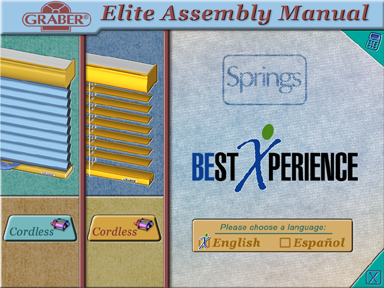    Multi-Lingual Tutorial for Assembling Blinds 1 of 9 |
|
Technology: Delphi application, Serial
device interface, File-based data management The Palmlink software supported PalmLab's hand held colorimeter, which performed veterinary tests. The software interfaced with the device via a serial port to transfer measurements from the device to a computer database. The PalmLink software maintained this database of measurements, as well as files for patients and clinics. The software was designed to make it
easy for vets to turn measurements from PalmLab's colorimeter into
something meaningful. A report was generated by simply selecting
the desired measurements and the species from which they were taken.
A patient's previous test results could be added to the report for
comparison. Interpretations suggesting reasons for hi or lo readings
were available with a button click and were also footnoted at the
bottom of the printed report. |
    PalmLink Colorimeter 1 of 4 |
|
Technology: Asymetrix Toolbook program,
Audio, File-based data management Madison Kipp's tutorial is used to train and certify employees to inspect die cast parts for defects. This training is used in conjunction with hands on learning and exercises. The tutorial needed to be easy to run for novice computer users with limited reading ability. Each of the 30 items in the certification refers to an actual part that the trainee inspects to identify one or more major defects. The test results are kept in a database for review by the program administrator. Madison Kipp has been using this
training program since 1996. In 2003, the program finally needed to be updated.
The old computers and software were running fine, but the parts for
the certification test were wearing out! |
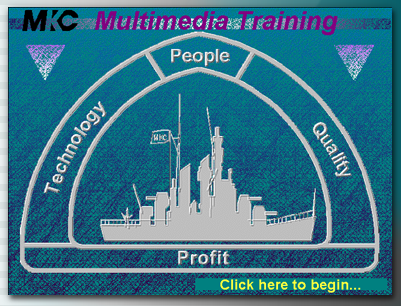    Training and Certification
1 of 13 |
|
Technology: Asymetrix Toolbook program,
3D modeling, Animation This tutorial teaches the basic science behind Fourier Transform Infrared Spectroscopy (FT-IR). We kept the words to a minimum and instead devised interactive graphics and 3D animations to explain advanced concepts in physics and chemistry. A functioning 3D model illustrates how an FT-IR spectrometer works. Our unique animation of the interferometer (screen 10) may be the easiest way to see how a Michelson interferometer modulates an infrared beam.
After trying other methods to introduce spectroscopy, Thermo has distributed this tutorial
with their spectrometers for over a decade. When users understand the basic science,
they have a better intuition for how to use their instruments. Coming up with
creative ways to present complex ideas is one of the things we do best. Other Credits: The
Pixel Farm (Graphics, Animations) |
    Beginner's Guide to 1 of 11 |
|
Technology: FileMaker database with custom front-end,
Dual platform application, Hybrid CD delivery, Custom installer Demco Media's CD catalog was distributed to over 30,000 users, including sales reps, librarians and other clients. The catalog provided a sophisticated tool for selecting books from the over 22,000 books offered by Demco Media. The automated order form kept a record of orders for multiple users. Related products such as customizable sets of books and reading program materials could be specified and ordered along with individual book titles. The CD ran on either Windows or Macintosh.
It could be installed or run directly from the CD. Complex searches
executed in seconds. In addition to speed and cross-platform support,
FileMaker was chosen to be compatible with Demco Media's internal
database, simplifying the data transfer process and enhancing Demco
Media's internal database along with the catalogs. |
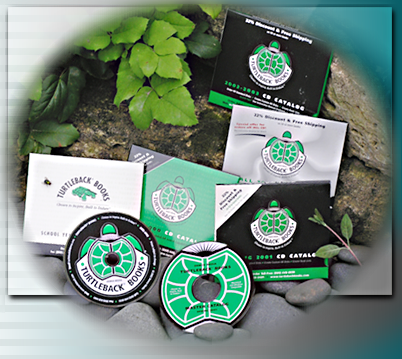    Turtleback Books 1 of 13 |
|
Technology: Microsoft Access database application The Alexander Company uses this application to customize the finish options, such as countertops and flooring, in their Capital West urban redevelopment project in downtown Madison. Home buyers can customize the finish options in any of the approximately 400 units and get upgrade costs on the fly based on the cost of materials. Clients choices are saved and, once finalized, passed along to the builders. The software program was designed to allow The Alexander Company staff to input new units into the system. The process starts by entering information about paint, countertops, flooring, appliances and other finish materials. A "Materials Manager" tracks how a material is measured, its cost and other descriptive information. Floor plans are then defined by specifying standard finish options and upgrade options available in each room of the floor plan. This allows any unit having that floor plan to be customized.
|
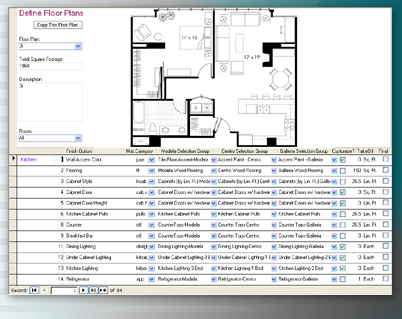    Condo 1 of 6 |
|
Technology: REALbasic application, Multi-lingual,
Multi-platform, Custom installers, Hybrid CD delivery Precision Information maintains a vast library of professionally developed articles on financial topics. The Guide software was architected to allow Precision Information to create new Guide products by defining the structure of the content without changing any code. Thus this software was much like a custom web browser that navigated a specified set of files in a defined hierarchy. We worked on a number of versions of Educated Investor Guides. The first version was a reimplementation of the client's Windows-only Guide to add cross platform capabilities as well as architectural improvements. This version was distributed to over 75,000 users as a premium for QuickBooks and ran on Windows, Mac OSX or Mac OS9. We also provided installation packages for each platform and a hybrid CD master. The version shown at right was a bilingual version. When the user selected a new language the content on their screen was immediately switched to that language. All versions included quiz questions, printing and internet links. |
    Educated Investor 1 of 10 |
|
Technology: Asymetrix Toolbook program This hands on training program for Macy's new Point Of Sale (POS) system was a leading edge computer based training tool. Custom Technology was part of a team of programming experts which was assembled to ensure that the program was in place to train new employees in time for the Christmas shopping season. The instructional experts at Motivation Media designed an innovative training program that simulated dozens of different scenarios requiring specific instructions for using the POS system. Scenarios typically involved customers making different types of purchase, such as using cash, credit card or gift cards. The simulation often included video of the the customer interaction. The program was designed to be run on the LCD monitor of the POS system. The trainee was required to perform the expected functions on the POS system, such as swiping the credit card and opening and closing the cash drawer. The system sensed whether the trainee was doing the expected actions and provided appropriate feedback. An orientation module, with a variety of interactive exercise types, covered topics pertinent to new Macy's employees. |
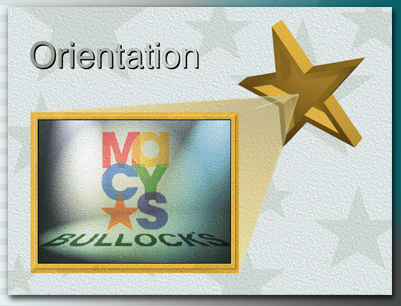    Macy's POS 1 of 14 |
|
Technology: DOS application written in Borland C++ SRA's C++ course was one of the first professional computer-based training courses to teach the then new C++ programming language. Written before Microsoft Windows was a standard, this application managed its own text-based windows. A system for authoring the interactive exercises was created to allow course authors to easily specify exercise content. In addition to standard exercise types such as multiple choice, exercises often asked students to manipulate lines of C++ code. The system used sophisticated techniques to analyze the code submitted by the student and provide intelligent feedback. The authoring system we created for this course utilized a simple definition language for specifying exercises. Exercise definitions were semi-compiled and then interpreted. Storyboards could also be generated from the definition language. We worked with the course authors to create a tool that would satisfy the course needs and received very positive feedback on its usefulness.
|
    SRA C++ Course 1 of 19 |
|
Technology: Delphi program, Internet communications using
custom protocol over TCP/IP sockets, Microsoft SQL Server database design
and support application written in Delphi Panterra was a mega player
internet game developed prior to big name games like Sony EverQuest and
Ultima Online. Besides being reviewed as the most playable mega
player game on the Internet in 1998, Panterra was also a sophisticated
client-server application. Players ran a game front end developed
by Custom Technology that communicated with a game server using
a custom internet protocol to coordinate the actions of hundreds
of players. Over 50,000 graphic elements were used to create the
vast lands of Panterra and its inhabitants, enhanced by animations,
original music and sound effects. Panterra was an information
intensive application, for which Custom Technology designed a database
and tools for dynamically creating and altering the world of Panterra
using client-server SQL database technology. After several years
of running the game, its creator decide to go back to hunting and
fishing on terra firma. |
    Panterra Mega Player
1 of 18 |